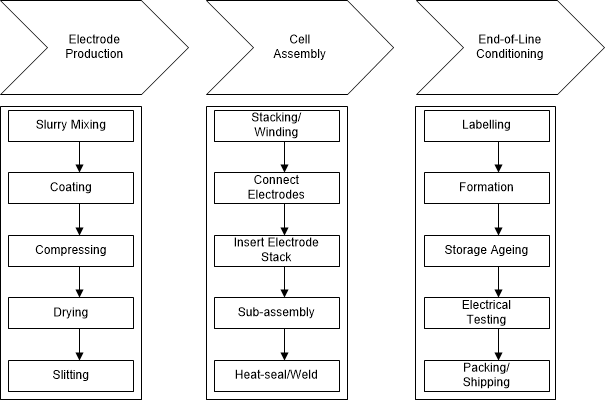TIDUF33 june 2023
- 1
- Description
- Resources
- Features
- Applications
- 6
- 1System Description
- 2System Overview
-
3Hardware, Software, Testing Requirements,
and Test Results
- 3.1 Hardware Requirements
- 3.2 Software Requirements
- 3.3 Test Setup
- 3.4 Test Procedure
- 3.5 Test Results
- 4Design and Documentation Support
- 5About the Author
1 System Description
The battery tester equipment includes a wide variety of equipment used to test single cells, battery modules, and high-voltage battery packs. The test equipment contains precision power supplies and data acquisition systems, and is used for charging and discharging of batteries, and measures various parameters of the cells.
Figure 1-1 shows a simplified Li-Ion battery manufacturing process. The Final stage, End-of-Line Conditioning, includes cell formation and testing. Formation is a critical step in the manufacturing of Li-ion cells. During formation, the cells go through a process of initial charge and discharge, which results in the formation of the solid electrolyte interface (SEI) layer. The quality of the SEI layer impacts capacity and reliability of the battery cell. To control the formation process, precise programmable power supplies are used for charging and discharging of cells. These power supplies are called battery formation systems or battery testers. The accuracy required in battery testers for voltage and current is typically between ±0.02% and ±0.05% of full-scale.
 Figure 1-1 Simplified Li-Ion Battery
Manufacturing Process
Figure 1-1 Simplified Li-Ion Battery
Manufacturing Process